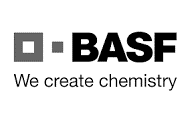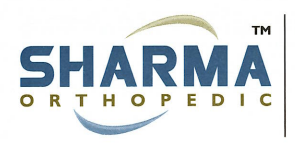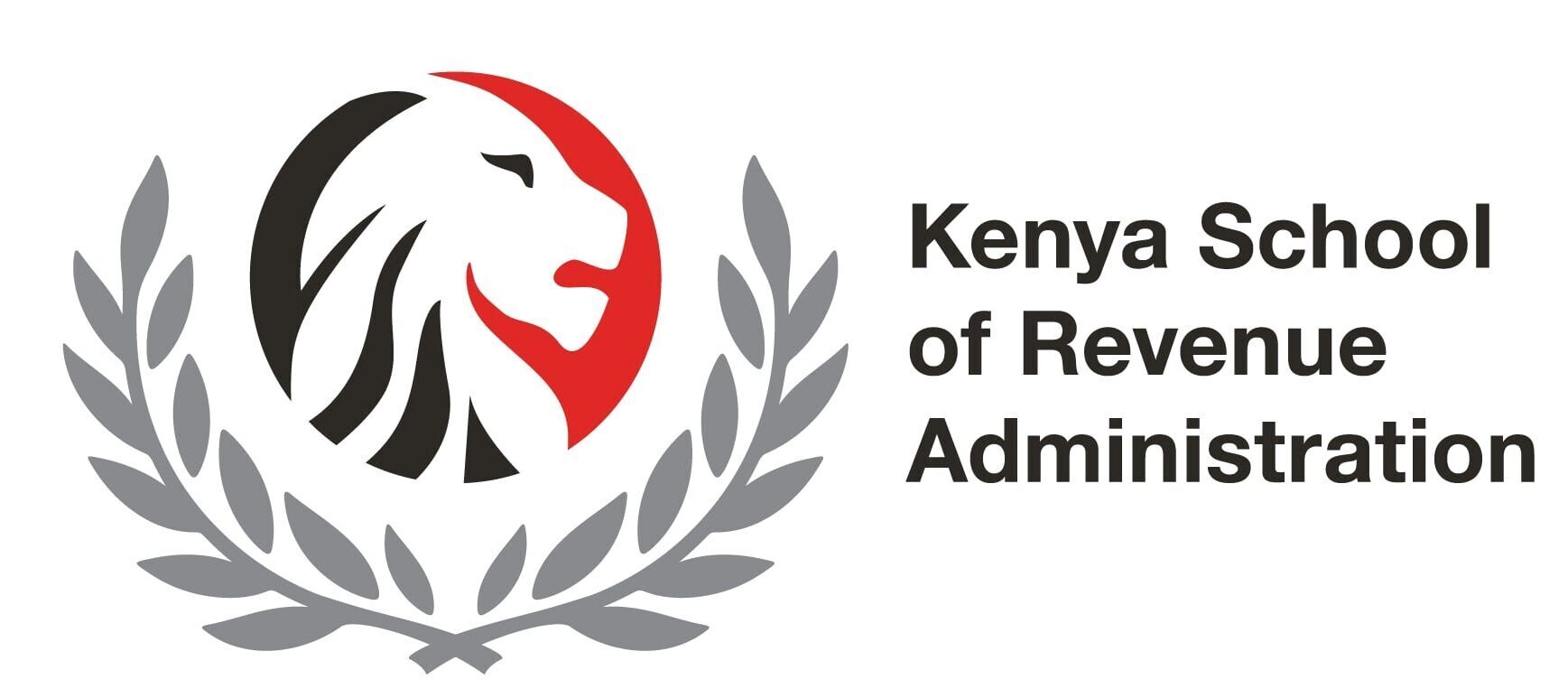The respondent required the applicant to pay a sum of KShs. 127,795,427/= in respect of the said pharmaceutical products which the respondent alleges the applicant had misclassified in its- import documentation. According to the respondent, the pharmaceutical products in question were food supplements and not medicines and therefore they ought to have been classified under custom tariff Code No. 2106.90.90 and not custom tariff Code No. 3004.90.90 which is in respect of medicines.
JUDGEMENT
The applicant -is a vendor and distributor of pharmaceutical products in Kenya and other countries in Sub-Sahara Africa. The applicant has been appointed by, among other international pharmaceutical companies, Novartis Consumer Health SA. The applicant imports and distributes, among other drugs manufactured by the company, drugs known by registered names “Ca~C1000 Sandoz” and “Sandoz Calcium- forte 500mg3’ (hereinafter referred to as “the pharmaceutical products”). When importing any drug, the applicant was required to submit import documentation to the respondent for the purposes of assessment of custom duty payable in respect of each consignment. It is common ground that the import of pharmaceutical products which are classified as medicines attract 0% import duty. The applicant has been importing and distributing the above pharmaceutical products as medicines under the Custom Import Tariff Code No.3004.90.90.
In exercise of its mandate pursuant to the provisions of Sections 235 and 236 of the East African Community Customs Management
Act, 2004 (hereinafter referred to as “the Act”) the authorized officers of the respondent’s post clearance audit division undertook an in-depth inspection of the applicant between the period 2004 and 2007 to ascertain the extent to which customs laws and regulations had been complied with. The applicant fully cooperated with the respondent by supplying all the documentation requested by the respondent. On 24th July 2008, the respondent wrote to the applicant notifying the applicant of the findings that it had made following the in-depth inspection audit of the applicant. The respondent required the applicant to pay a sum of KShs. 127,795,427/= in respect of the said pharmaceutical products which the respondent alleges the applicant had misclassified in its- import documentation. According to the respondent, the pharmaceutical products in question were food supplements and not medicines and therefore they ought to have been classified under custom tariff Code No. 2106.90.90 and not custom tariff Code No. 3004.90.90 which is in respect of medicines. The audit revealed other misclassification of custom tariffs by the applicant which is not of concern to the court in this application. This is because, according to the applicant, the issue had been amicably settled with the respondent. The respondent did not dispute this fact in this application.
When the respondent made the demand for payment of the amount, the applicant wrote to the respondent, vide its letter dated 7th August 2008, reiterating its position that the pharmaceutical products were medicines and not food supplements. The applicant appealed for the respondent to reconsider its decision. The applicant insisted that it had complied with the guidelines relating to the import documentation of the said pharmaceutical products under the correct customs tariff code.
Correspondence were exchanged between the applicant and the respondent over the issue until finally an agreement was reached the dispute to be referred to the World Customs Organization (WCO) for determination of the tariff that should be applied in respect of the said pharmaceutical products. The respondent referred the dispute to the World Customs Organization and sought its opinion in regard to whether the pharmaceutical products in question should be classified as medicine or as food supplement. In its response dated 19th December 2008, Mr. Antoine Manga, the director of the World Customs Organization wrote to the respondent advising that the pharmaceutical product “Calcium-Sandoz Forte 500mg” was a food supplement. At page 2 of its opinion, he stated as follows:
“The description of “Calcium-Sandoz (Forte 500mg)”
■ suggests that it is essentially a preparation to supplement a normal diet, most specifically, to increase the intake of calcium. Calcium is known as an element of vital importance for human organisms and naturally forms part of a normal
diet. Additional quantities of calcium supplied by “Calcium- Sandoz (Forte 500mg)” may have an overall beneficial effect on general health and wellbeing. This, however, would not qualify the product at issue as a medicament within the meaning of chapter 30.”
As regard the pharmaceutical products °Ca-C 1000 Sandoz”, the director had this to say:
‘”Regrettably, given that the Secretariat was unable to find the necessary technical information about “Ca-C 1000 Sandoz” in your letter, it would refrain from expressing its opinion on the matter to avoid any misinterpretation. If you can provide.- the information on that product, the Secretariat will examine the classification and give its advice on this matter. ”
On 6th January 2009, the respondent wrote to the applicant demanding payment of the tax assessment of Kshs. 127,795,4277= as a result of the tariff code reclassification of the pharmaceutical products. The respondent informed the applicant that its appeal in respect of the tariff classification of the pharmaceutical products had been rejected after the World Customs Organizations (WCO) had ruled that the pharmaceutical products were classified under the customs tariff Code No. 21.06, and not under customs tariff No.30.04, meaning that the pharmaceutical products were classified as food supplements and not medicaments. The respondent demanded payment of the above sum within seven (7) days of the date of the letter.
The applicant was aggrieved by the said decision. On 9th January 2009, the applicant sought and was granted leave by the court to apply for an order of certiorari to remove to the High Court the decision contained in the respondent’s letter dated 6Ih January 2009 for the purposes of quashing the same. The applicant was further granted leave to apply for an order of prohibition to prohibit the respondent from demanding tax under Section 135 of the East African Community Customs Management Act, 2004 in respect of the importation of Calcium Sandoz Forte 500g and Ca-C 1000 Sandoz Calcium, tablets (the pharmaceutical products) by the applicant. The court stayed the taking effect of the demand made by the respondent pending the hearing and determination of the substantive application. On 29th January 2009, the applicant filed the substantive notice of motion pursuant to the provisions of Order LI” Rule 3 of the Civil Procedure Rules essentially seeking two orders of the court: the applicant sought an order of certiorari to remove into the High Court for the purposes of quashing the decision and order of the respondent dated 6th January 2009 consequent to the demand made on 24th July 2009. The applicant further sought an order of prohibition, prohibiting the respondent from demanding payment of tax under Section 135 of the East African Community Customs Management Act, 2004 in respect of the importation of the said pharmaceutical products.
The grounds in support of the motion are stated on the face of the application. The applicant contends that the respondent had unlawfully demanded payment of tax in respect of the pharmaceutical products, yet, the pharmaceutical products in question had since 2001 been imported as a medicament under tariff code No.3004.90,00. It was the applicant’s case that the respondent had no basis in law to reclassify the said pharmaceutical products as food supplements instead of medicaments and therefore demand payment of tax in respect of the same. The applicant further argued that one of the pharmaceutical products, Calcium Sandoz is used to treat and prevent osteoporosis and was therefore a medicament and not a food supplement. The applicant complained that the respondent had relied on a classification given by the World Customs Organization (WCO) which is not binding and could not be given retrospective effect in any event. The applicant was aggrieved that it had not been afforded an opportunity to present its case or make arguments at the WCO before it could be called upon to be bound by its decision. The applicant argued that the respondent had no jurisdiction to demand payment of tax pursuant to a ruling made by WCO or under Section 135 of the Act because the applicant contends that Calcium Sandoz was a medicament and not a food supplement. The applicant was of the view that the respondent had acted in excess of its jurisdiction under the Act by demanding payment of tax when the same was not payable.
In the alternative, the applicant argued that most of the Calcium Sandoz imported by the respondent was re-exported and therefore no tax was chargeable in respect of the same. The applicant urged the court to grant the orders sought so as to prevent the applicant’s business operations from being crippled. The applicant was of the view .that if its operations were affected, it would cause shortage of Calcium Sandoz in the market which will adversely affect sufferers of osteoporosis and pregnant women. The motion is supported by the verifying affidavit sworn by Dr. Sanjay Advani, and the statement made pursuant to Order LHI Rule 2 of the Civil Procedure Rules. Dr. Advani swore an affidavit in further support of the motion. It is the applicant’s case that the respondent’s decision to demand the payment of tax after re-classifying the pharmaceutical products under the customs tariff Code 2106.90.90 (relating to food or nutritional supplement) instead of customs tariff Code 3004.90.00 (which relates to medicaments) was unlawful because the pharmaceutical products in question, and particularly Calcium Sandoz was classified as medicine in Kenya by the Pharmacy and Poisons Board and not as a food supplement. The applicant took issue with the manner in which the respondent obtained the opinion from the WCO without giving them an opportunity to present their side of the case to the WCO. In any event, the applicant argued that WCO opinion could not bind the applicant under Kenyan law, and even if it did. it could not be applied retrospectively. The applicant urged the court to issue the orders sought in their application with a view to quashing the decision of the respondent to demand the said payment of tax that was not due or payable.
The application is opposed. Hadi Sheikh Abdullahi, the Assistant Commissioner, Customs Services Department, Post Clearance Audit Unit of the Kenya Revenue Authority swore a replying affidavit in opposition to the application. In the said affidavit, he deponed that the respondent had lawfully demanded payment of tax from the applicant after its in-depth audit revealed that the applicant had misclassified the customs tariff code in respect of the pharmaceutical products that are the subject of this motion. He deponed that it was the duty of the applicant to correctly classify the customs tariff code of the pharmaceutical products that it imports into the country. He swore that the respondent’s audit showed that instead of the applicant classifying the pharmaceutical products in question as food supplements; they applied the customs tariff code in respect of medicaments. He deponed that a study and tests conducted by the respondent had revealed that the pharmaceutical products in question, although at times recommended by doctors in special cases, were essentially for the purpose of maintaining health or wellbeing of an individual but not for a specified treatment of any disease or ailment. He reiterated that as the pharmaceutical products were nutritional supplements and not a medicament, it was supposed to be classified under the customs tariff HS Code 2106.90.90 and not under the customs tariff HS 30.03 or HS 30.04 which must contain sufficient quantity of active substance with curative or prophylactic against particular ailment or disease.
Hadi Abdullahi explained that the applicant having agreed for the WCO to render its opinion in regard to the classification of the pharmaceutical products, they could not turn around and claim that they have not been given an opportunity to put forward their case. He stated that pursuant to Section 122 of the Act, an opinion rendered by the WCO was binding and therefore the applicant had no choice but to abide by its decision. He deponed that the applicant could not escape tax liability by alleging that a substantial part of the pharmaceutical products was meant for export. This was because, if the applicant had imported the pharmaceutical products for export, it should to have followed the proper procedure of placing the goods under customs control and executing a bond to secure the said goods as required under Section 106 and 107 of the Act. In his view, it was virtually impossible for the respondent to confirm the claim by the applicant that it had re-exported a substantial part of the pharmaceutical products in issue after importing them into the country. He swore that import duty being a self-assessment tax, it was the responsibility of the applicant to properly declare goods that it had imported. He urged the court to disallow the application for judicial review and reach a finding that the applicant is entitled to pay tax on account of goods that they had imported and declared them under the wrong customs tariff code.
Prior to the hearing of the substantive motion, counsel for the applicant and the respondent agreed by consent to file written submissions. They duly complied. The applicant filed its submissions which were responded to by the respondent. The applicant filed further submissions in response to the respondent’s reply. At the hearing of the substantive motion, I heard oral submissions made by Miss Malik for the applicant and by Miss Mwangi for the respondent. I have carefully considered the said submissions. I have also considered the authorities cited by learned counsel in support of their respective opposing positions. This is a judicial review application. – The jurisdiction of this court when considering an application for judicial review was succinctly spelt out by Emukule J in Nairobi HC Misc. Civ” App. No.1638 of 2004 Total Kenya Ltd vs The Permanent Secretary, Ministry of Energy & Others (unreported). At page 38 of his ruling, he stated as follows:
“The scope of judicial review is extensively discussed in many textbooks on the subject and the most commonly cited texts include Administrative Lavy by Sir William Wade, 8th Edition Grahame Aldous and John Alder –
Applfcation For Judicial {Review, Law and Practice of drawn Officer / Edition.~and that constant companion to practitioners in the. Commonwealth,
Hafsburys Laws of England, Vol. 1 “J, 4th Edition, where at paragraph 60, the learned authors say-
“60. The Mature of Judicial ReWeW
Judicial review is the process by which the High Court exercises its supervisory jurisdiction over the proceedings and decisions of inferior courts, tribunals and other bodies or persons who carry out quasijudicial functions or who are charged with the performance of public duties…”
The duty of the Court is to confine itself to questions of legality – although the court should not be used as a means to obtain a decision on a question of law ir)advance of hearing (R.- vs Crawn Cot/rf Reading, ex p Stutchinson (1988) 1 ER. 333 at 340 per Lloyd L5). The concern of judicial review is whether or not a decision making authority exceeded its powers, committed an error of law, committed a breach of the rules of natural justice, a duty to act: fairly (per Lord Roskill in Council of CMf Service Uhion vs hfnister for the Civil Servfcg f19851 A.
- 374, at page 414), or whether the authority reached a decision which no reasonable tribunal could have reached (Associated Provincial Picture Houses Ltd. Vs
Wednesbury Corporation (1948} 2 ER. 680 at 683 or abused its powers (Re: Preston -vs- Inland Revenue Commissioners. [1985] 2 ALL ER. 237). It is so whether or not there is a right of appeal against the decision on the merits. The duty of court is to confine itself to the question of iegaiity.1’
I agree with the above statement of the law.
Under Section 235 of the East African Community Customs Management Act, 2004, the respondent has power to require any owner of goods or any person in possession of documents relating to goods which have been imported, exported, transferred’ or manufactured within five (5) years prior thereto, to produce all books, records and documents relating in any way to the goods; to answer any question relating to the goods; and to make declaration with respect to the weight, number, measure, strength, value, cost, selling price, origin, destination or place of trans-shipment of the goods as the respondent may deem fit. Under Section 236(a) of the Act the respondent has power to verify the accuracy of the entry of goods or documents through examination of books, records, computer stored information, business systems and all relevant customs documents, commercial documents and other data related to the goods. It was in exercise of its powers under the said sections of the Act that the respondent undertook an in-depth audit of the applicant with a view to verifying the accuracy of entries made by the applicant when importing certain pharmaceutical products.
According to the respondent, its audit revealed that the applicant had mis-classified two pharmaceutical products being, Calcium Sandoz Forte 500 mg and Ca-C 1000 Sandoz as medicines instead of
nutritional supplements. This classification has tax significance. Pharmaceutical products which are classified as medicaments are zero- rated in terms of import duty. Pharmaceutical products that are food or nutritional supplements attract import duty. The dispute between the applicant and the respondent relate to the classification of the two pharmaceutical products. Whereas the applicant insists that the pharmaceutical products are medicaments, the respondent on the other hand is of the firm view that the pharmaceutical products in question are food or nutritional supplements. According to the applicant, the pharmaceutical products are used for treatment of osteoporosis generally and osteoporosis in menopausal women in particular. The applicant argued that the pharmaceutical products in question are prescription drugs prescribed by doctors to those suffering from the above ailments and to pregnant women who have calcium deficiency. On its part, the respondent reiterates that the pharmaceutical products are food supplements as revealed in the tests it has carried out.
In support of its case, the respondent annexed a copy of a publication prepared World Health Organization (WHO) and Food and Agriculture Organization (FAO) in 2004 titled “Vitamin and Mineral Requirements in Human Nutrition” which classifies Calcium as a nutrition supplement. At page 157 of the publication, the authors make the following observation:
“Although it is well established that calcium deficiency causes osteoporosis in experimental animals, the contribution that calcium deficiency makes to osteoporosis in humans much more controversial, not least because of the great variation in calcium intakes across the world (Table 30), which does not appear to be associated with any corresponding variation in the prevalence of
osteoporosis. This issue is dealt with at greater length below in the section on nutritional factors; in this section we will simply define what is meant by calcium requirement and how it may be calculated. The calcium requirement of an adult is generally recognized to be the intake required to maintain calcium balance and therefore skeletal integrity. The mean calcium requirement of adults is therefore the mean intake at which intake and output are equal, which at present can only be determined by balance studies conducted with sufficient care and over a sufficiently long period to ensure reasonable accuracy and then corrected for insensible losses.”
The applicant argued that the pharmaceutical products, were medicaments and not food supplements as claimed by the respondent. In support of its case, the applicant annexed a copy of a letter written by the Pharmacy and Poisons Board dated 7,h August 2008, addressed to the respondent which classified the pharmaceutical products as medicaments and not food supplements. The said letter however concedes that the pharmaceutical products in question fall in the category of what may be referred to as borderline products. It states as follows:
“This products fall in the category referred to as borderline products. They may be classified as medicines, food supplements or both, in making a decision as to whether a product is medicine or food supplement, the board considers each individual product on well defined guidelines (Guidelines on borderline products – 200d)l>
The Pharmacy and Poisons Board was of the view that in accordance with its guidelines, the pharmaceutical products in question were medicaments and not food supplement. The applicant further argued that the said Pharmacy and Poisons Board had registered the pharmaceutical products as medicines and therefore the respondent ought to recognize the said pharmaceutical products as such. In further defence of its position, the applicant annexed documents to the affidavit in support of the application that suggested that the pharmaceutical products in issue had been recognized Jay other countries including Tanzania and Zimbabwe as medicines and not as food supplements. The applicant further argued that, according to European standards, and especially that of the Republics of German, Spain, Czech and Slovenia, the said pharmaceutical products were registered as medicaments which were used for treatment of post-menopausal osteoporosis.
Having evaluated the opposing positions taken by the applicant and the respondent in regard to- whether the pharmaceutical products that are the subject of this ruling are medicaments or food supplements, I am of the considered opinion that in determining whether the pharmaceutical products are medicines or nutritional supplements, what should of paramount consideration is the active ingredients that constitutes the said pharmaceutical products. Having carefully read evaluated the evidence placed before me by the applicant and the respondent, I am of the view that the pharmaceutical products in question are food supplements and not medicines. It was clear from the report prepared by the WHO and FAO that any pharmaceutical product containing calcium as an active and main ingredient is a nutritional supplement and not a medicament. While it is conceded that in other national jurisdictions, the pharmaceutical products in issue has been classified as medicine used for the treatment of osteoporosis, especially in post-menopausal women, it appears to this court that it is generally accepted by members of the scientific community that any pharmaceutical product containing calcium as an active ingredient is used as a nutritional supplement for the wellbeing of a human being.
The applicant complained that the respondent had sought opinion from the WCO without its involvement. The applicant argued that its right to be heard before the opinion was rendered by the WCO was not taken into consideration. As stated earlier in this ruling, it was evident that it was the applicant who instigated the reference of the dispute regarding the customs classification code to the WCO. In its appeal to the respondent dated 12lh September 2008, the applicant requested the respondent to seek an opinion from the WCO in regard to whether the two pharmaceutical products were food supplements or medicaments. At page 3 of the said letter, the applicant stated as follows:
“Our Humble Request
Based on the above submissions, we humbly request your good office to do tbe following for the sake of the Kenyan people and economy:-
Set aside the requirement of Security Board(sic) on taxes arising from the Post Clearance Audit.
Let the company continue declaring the medicaments under the usual tariff HS 3004.90.00 as KRA pursues the WCO tariff Ruling.
We promise to abide by. the WCO Ruling and the Laws of the country.
Is the complaint by the applicant valid in light of their pledge that they would abide’ by the WCO Ruling? I do not think so. Under Section 122(6) of the East African Community Customs Management Act,the respondent is required to apply or interpret the section and the provisions of the.-Fourth Schedule of the Act after taking due regard to the decisions, rulings, opinions, guidelines, and interpretations given by the directorate, the World Trade Organization (WTO) or the Customs
Corporations Council. The Fourth Schedule of the Act deals with the determination of value of imported goods liable to ad valorem import duty.
Kenya is a signatory to the International Convention on the Harmonized Commodity Description and Coding System, Kenya became a contracting party to the convention on 29th January 1988. The entry into force of the convention came into effect in Kenya on 1st January 1989. It was on the basis of this harmonized coding system that the applicant file the customs declaration documents for the pharmaceutical products in issue. It was evident from correspondence exchanged between the applicant and the respondent that the respondent was aware of the requirements of the convention and the Act in regard to the manner in which the applicant was required to declare the code of the pharmaceutical products in question. It was the duty of the applicant in filing the import declaration documents, to correctly assign the customs code to the goods that it had imported. It appears that in filling the customs declaration forms in respect of the pharmaceutical products, the applicant assumed that because the Pharmacy and Poisons Board had registered the pharmaceutical products in question as medicaments, then, it followed that the said pharmaceutical products could be declared as medicaments when filing the customs declaration forms. With respect to the applicant, I think the determination in regard to whether a pharmaceutical product is a medicament or a food supplement for the respondent’s taxation purposes is of complete different consideration than the requirement that are taken into consideration when a pharmaceutical product is sought to be registered with the Pharmacy and Poisons Board.
The opinion of WCO binds the applicant. It is the applicant who requested the respondent to refer the dispute between itself and the respondent to the WCO. Although the applicant questioned the procedure by which the respondent sought opinion from WCO, it is evident that there is no requirement under the convention for an aggrieved party to make representations directly to the WCO when an issue has been referred for WCO to render is opinion. WCO does not deal with an aggrieved importer directly but through the customs administration of the contracting country. In this case that customs administration body is the respondent. The applicant was aware, or ought to have been aware of this limitation in terms of their capacity to make representations in regard to the customs tariff codification of the pharmaceutical products in question. The applicant having voluntarily submitted itself to this dispute resolution process, cannot later turn around when the decision has gone against them and claim that it had not been given an opportunity to make representations before the opinion was rendered by the WCO.
As regard whether the respondent unlawfully charged the applicant import duty in respect of pharmaceutical products which had been imported with a view to being exported, it was apparent that the applicant contravened the provisions of Section 16(1)(c) of the East African Community Customs Management Act by failing to declare, on importation, that the pharmaceutical products were meant for export. Although the applicant placed before the court evidence that indeed a substantial part of the pharmaceutical products imported were exported, it was evident that the applicant failed to place the said pharmaceutical products in a custom bonded warehouse where the goods would be under the control of the respondent pending exportation as provided under Section 16(1)(e) of the Act. The applicant cannot complain when it is required to pay custom duty for the said pharmaceutical products which for all intent and purpose were declared on importation as meant for home use.
It is the duty of this court, in an application such as a present one, to examine the process that the respondent used to reach the decision that is being challenged by the applicant in order to determine whether there was any illegality in the process. In the present application, it was evident that the respondent accommodated the applicant, including allowing the applicant to appeal against its decision to the WCO, without requiring the applicant to provide security bond as required by the iaw. Having scrutinized the process that the applicant applied in reaching the decision that the applicant should pay tax on account of mis-classification of the pharmaceutical products in issue, I am of the view that the complaints put forward by the applicant in this application have no merit. The respondent performed its statutory duty in accordance with the law.
The upshot of the above reasons is that the applicant’s application for judicial review lacks merit and is hereby dismissed with costs.
DATED AT NAIROBI THIS 19th DAY OF MARCH 2010
- KIMARU
JUDGE
———————————————————————————————————————–
Janron Consult, Tax Consultant Kenya, Customs Tax Consultant Kenya, Tax Advisory Kenya
Talk to Janron Consult for the following:
Ministry of Health Exemptions
Treasury Exemptions
Advance Ruling Application to KRA
Objection to KRA Rulings on Customs Value
Objections to KRA Rulings on HS Classification








